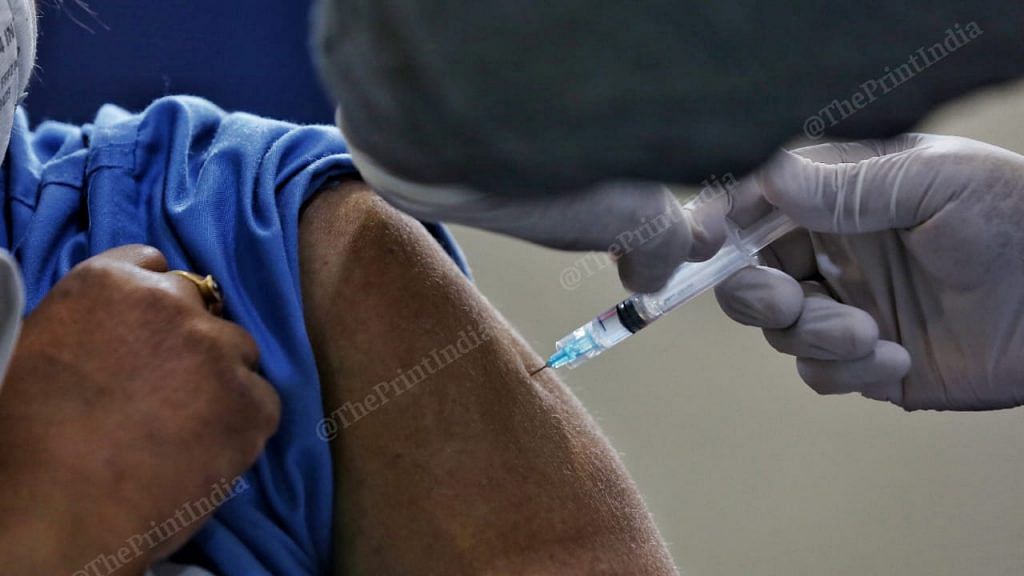Update: The author admits the estimates were wrong and has put out a clarification here.
There will not be a significant second wave of Covid-19 in India.
Last August, using a Cynically Optimistic Back Of The Envelope, or COBOTE, calculation, I estimated that Covid-19 will end its epidemic phase in India by January 2021. Karthik Shashidhar, my collaborator, used the curve-fitting technique to predict that the pandemic will be over in the country by February 2021. It appears that these predictions were not too far off the mark.
The same COBOTE method suggests that it is unlikely that we will have a significant ‘second wave’ across the country, although there will be small second waves in several cities and districts. This does not mean we can drop our guard and get back to pre-pandemic levels of congregation; rather, it means that if we continue to be careful, we will all be safe a few months down the road.
Let me explain.
Also read: Majority Indians have natural immunity. Vaccinating entire population can cause great harm
How many cases has India really had?
Although I’ve given it a glorified name tongue-firmly-in-cheek, my estimation relies on the fact that there are more real cases than the official tally suggests. How many more? This depends on your level of cynicism: my Cynic-o-Meter starts at 10x and the default level is 20x. So, if the official number of cases across India is just over 10 million, the actual number is likely to be 200 million, or around 15 per cent of the population.
However, the Indian Council of Medical Research (ICMR)’s own seroprevalence studies in August-September 2020 showed that there are 26-32 actual cases for every reported case in the country. If we set the Cynic-o-Meter to 32x, we have had around 320 million cases, corresponding to 25 per cent of the population of the country. In an earlier study, ICMR had proposed a correction factor of 80-100 per reported case, which permits us to dial up the Cynic-o-Meter all the way to 100x, to a billion cases, close to 75 per cent of the population.
Could this be right? Given that new cases are declining across the country, and the herd immunity threshold is estimated to be around 67 per cent, it is possible that close to a billion Indians have antibodies for Covid-19. Possible yes, but not likely.
That’s because the India-wide figures are misleading. As I wrote in an earlier column, we have had hundreds of local epidemics across the country; with densely populated and urban areas being more affected than others. Lockdowns, post-lockdown control measures, and public compliance were more effective in some areas and less in others. What we can say is this: wherever new cases are declining, we know that around 67 per cent of the “exposed” population possibly has immunity to the virus. Exposed population is the fraction that did not isolate itself adequately, the people who were not strict about masks, handwashing, and social distancing. It follows that if the exposed population in any city or district was large and new cases are few and declining, then the chances of a second wave are small. Cynicism will suggest that this indeed has been the case in India, where it is not uncommon to see the nose poking out of the mask, if at all there is a mask on the face.
This, then, is the basis for optimism. The risk of a second wave is small in most places across the country because most people have already been exposed. For the same reason, we might not need to be overly concerned about the new variants either.
Also read: How IISc & TIFR scientists helped Mumbai civic body anticipate Covid spread, make strategy
Risks still remain
There is, of course, a flip side. If you have been scrupulous about masks, handwashing, and social distancing, you are still at risk of contracting the virus. The risk is lower than it was a few months ago, but is still non-zero. The risk of complications and death are the same as they were earlier. So, if you are among those who have not had Covid-19, you should exercise the same caution and care.
The same logic applies for cities and areas that did well to control the spread earlier in the course of the pandemic: they are at a higher risk of a “second wave” as restrictions on movement end, and as schools, offices, and other public places reopen. This is perhaps what is happening in Kerala, Mumbai, and some other places that saw a resurgence in the number of new cases.
How can you tell if there will be a second wave in your city or local area? Here’s a rule of thumb. Set your Cynic-o-Meter to 20x. Multiply the official cumulative case count in your area by 20; if this figure is more than 67 per cent of the local population, you are likely to escape a second wave if the same level of precautions continue. If not, there is a greater risk of resurgence.
Remember, however, that all this is still part of a back-of-the-envelope analysis. It uses the sparse data that we have, and interprets it in oversimplified ways. While it is useful for us to get a sense of where we are in the pandemic, it is not good enough to relax our guard. Individuals and local governments must continue to err amply on the side of caution. The “all clear” signal will only come after a few months, once the majority of India’s vulnerable population has been vaccinated.
Nitin Pai is the director of the Takshashila Institution, an independent centre for research and education in public policy. Views are personal.
